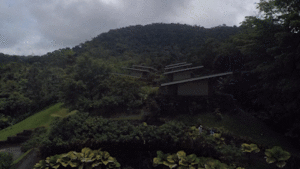
Prior EM, Miller GR, Brumbelow K. Topographic and Landcover Influence on Lower Atmospheric Profiles Measured by Small Unoccupied Aerial Systems (sUAS). Drones. 2021; 5(3):82. https://doi.org/10.3390/drones5030082.
Small unoccupied aerial systems (sUASs) are increasingly being used for field data collection and remote sensing purposes. Their ease of use, ability to carry sensors, low cost, and precise maneuverability and navigation make them a versatile tool for a field researcher. Procedures and instrumentation for sUASs are largely undefined, especially for atmospheric and hydrologic applications. The sUAS’s ability to collect atmospheric data for characterizing land–atmosphere interactions was examined at three distinct locations: Costa Rican rainforest, mountainous terrain in Georgia, USA, and land surfaces surrounding a lake in Florida, USA. This study aims to give further insight on rapid, sub-hourly changes in the planetary boundary layer and how land development alters land–atmosphere interactions. The methodology of using an sUAS for land–atmospheric remote sensing and data collection was developed and refined by considering sUAS wind downdraft influence and executing systematic flight patterns throughout the day. The sUAS was successful in gathering temperature and dew point data, including rapid variations due to changing weather conditions, at high spatial and temporal resolution over various land types, including water, forest, mountainous terrain, agriculture, and impermeable human-made surfaces. The procedure produced reliably consistent vertical profiles over small domains in space and time, validating the general approach. These findings suggest a healthy ability to diagnose land surface atmospheric interactions that influence the dynamic nature of the near-surface boundary layer.
